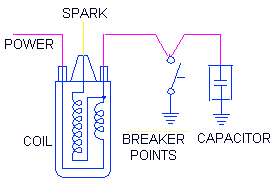You could also try a totally different method of ignition, a "glow plug" bought from a model shop. They glow red hot when you put 3V through them.
They're designed to ignite flammable gas so should work fine. 3V is also a lot easier to work with

If you really want high voltage then you have to watch the material you mount the spark electrodes in. Some plastics, especially black PVC pipe, is conductive so the current may prefer to going through the plastic rather than jump the gap.
If you can insulate it with some nylon washes that may help.
Also, the 'distance vs voltage' is different with different gasses and mixes.
You may find that it jumps fine in air while you're checking it but won't jump when the tube contains lighter fluid fumes. So the gap may have to be reduced.
If you're not using high voltage wire to get the HV to the electrodes you will need to make sure the wires don't rest against each other, or current will flow through the insulation instead of spark.
You really want the smallest gap possible because it will be a hotter spark.
I once blew up a coke bottle full of pressurized air + acetylene with some screw terminals in the bottle and a car ignition transformer.
(
Hint, don't do that, the bang is louder than dry ice and scares the crap out of people including yourself.)
The point is a car ignition transformer does have enough energy do ignite flammable gas if you really want to ignite using high voltage.
Here's the correct way to wire up a ignition coil, the capacitor is important (try 0.1uf 300V mains filter cap).
The spark happens when you "let go" of the button when the backemf starts to ring at ~300V into the capacitor and back into the primary.
